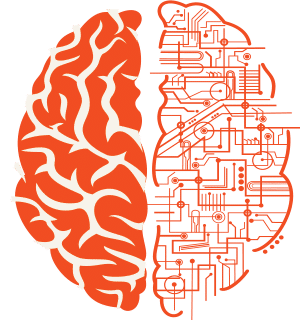Art Processing Sharing Blog


 Those of you who have played with the MSG Evolver ArtMapper will probably understand why i find his work interesting. Watching the documentary made me realize i should probably pay more attention to diagonal diamond grids for art mapping. MSG Evolver provides some diagonal diamond grid options, but they are adaptive, and having a simple repetitive diamond grid would be a useful addition to the Art Mapper section.
The visual system's spatial frequency perception falls off at diagonal spatial frequencies (you can't see them as well as a normal rectangular grid of the same dimensions), so it's perhaps not surprising why Close uses the diagonal grid so much. There's a really nice example in the documentary of a painting that uses a circular tiling which is quite nice, another grid option i should add at some point in the future.
I like the adaptive grids a lot for image database photo mosaic art mapping. But there is a visual simplicity to a simple regular grid that is really appealing in some situations. One way to think about it is that a regular grid is not lighting up as many neurons when you see it, as opposed to an adaptive grid that is going to be firing off many more spatially tuned channels in the visual system.
Those of you who have played with the MSG Evolver ArtMapper will probably understand why i find his work interesting. Watching the documentary made me realize i should probably pay more attention to diagonal diamond grids for art mapping. MSG Evolver provides some diagonal diamond grid options, but they are adaptive, and having a simple repetitive diamond grid would be a useful addition to the Art Mapper section.
The visual system's spatial frequency perception falls off at diagonal spatial frequencies (you can't see them as well as a normal rectangular grid of the same dimensions), so it's perhaps not surprising why Close uses the diagonal grid so much. There's a really nice example in the documentary of a painting that uses a circular tiling which is quite nice, another grid option i should add at some point in the future.
I like the adaptive grids a lot for image database photo mosaic art mapping. But there is a visual simplicity to a simple regular grid that is really appealing in some situations. One way to think about it is that a regular grid is not lighting up as many neurons when you see it, as opposed to an adaptive grid that is going to be firing off many more spatially tuned channels in the visual system.
You need to be a member of Studio Artist to add comments!
Hi, here is a new video, lots of MSG (background layer) and MSG generation path starts along with Time Particles in the paint synth, the "Piggy" figure I made in ZBrush and then animated in Blender, with embedded alpha channel, then took into Studio Artist and made into several different kinds of Movie Brushes. Several layers composited together in Blender. Music made with Bespoke Synth and my Shenai. If anyone has any questions about how it was done I'd be happy to explain more.…
I am not sure if this forum is active anymore... I thought it would be fun to post a very early piece of mine made with, probably, SA3 or 4. I have been a user since 2001.
"Chromosome Rain", 2010
Another experiment painting with Paint Synth vector based presets. Captured rather than output to file.
Either the night sky before the Day of the Triffids - or a closup of Star Treks The…
A capture of a PasEq playback (all I had left after a crash) I didn't save the over sized Paint Synth Presets that I was adjusting and testing... But I did save the PAsEq. This would be what…
Working with Source .png Images Turning the alpha channel on for transparent .png backgrounds When using .png source images with transparent backgrounds, you will need to set Canvas > Selection > Set to > Source Alpha and then Check Mask…
Basics of the Dual Paint Mode, Concepts and How to Create Your Own Dual Paint Presets For More Information on Dual Paint please see this DUAL PAINT POST For More Information DUAL PAINT POST
The post…
How to Erase the Canvas To erase the canvas choose the Eraser Icon at the top of the Interface or choose Canvas > Erase to See this Post for more detailed information on the canvas eraser options.
The post…
Everything You Need to Know about Studio Artist Presets and Preset Management
The post Preset Management Video appeared first on Studio Artist…
Resizing the Canvas Please see this tip on Resizing the Canvas And how to Resize the Canvas for High-Resolution Print
The post Resizing the Canvas appeared first on…
Comments
A totally different approach would be to just create a black and white grid in Studio Artist and then use the Flat Region Colorize Ip Op with one of the dual mean coloring variations to split the blocks black and white, then reduce the contrast and then recolorize that image. I'll try to post an example of that when i get the chance.
Or, i guess you could build your diagonal black and white block image, make that the current selection, then use the paint synthesizer regionize features. You'd want the path start to be 'selection as regions- all levels'. You could use the paint color modulate parameters to build in an opponent coloring modulation into the paint to help diferentiate the patterning in the individual blocks and use an outline fill region pattern type for the path start regionize path type in path shape control panel.
I also thought it should be easier to work with diagonal regions in the paint synthesizer than the technique i described above, so i added some new features i'm using in this example.